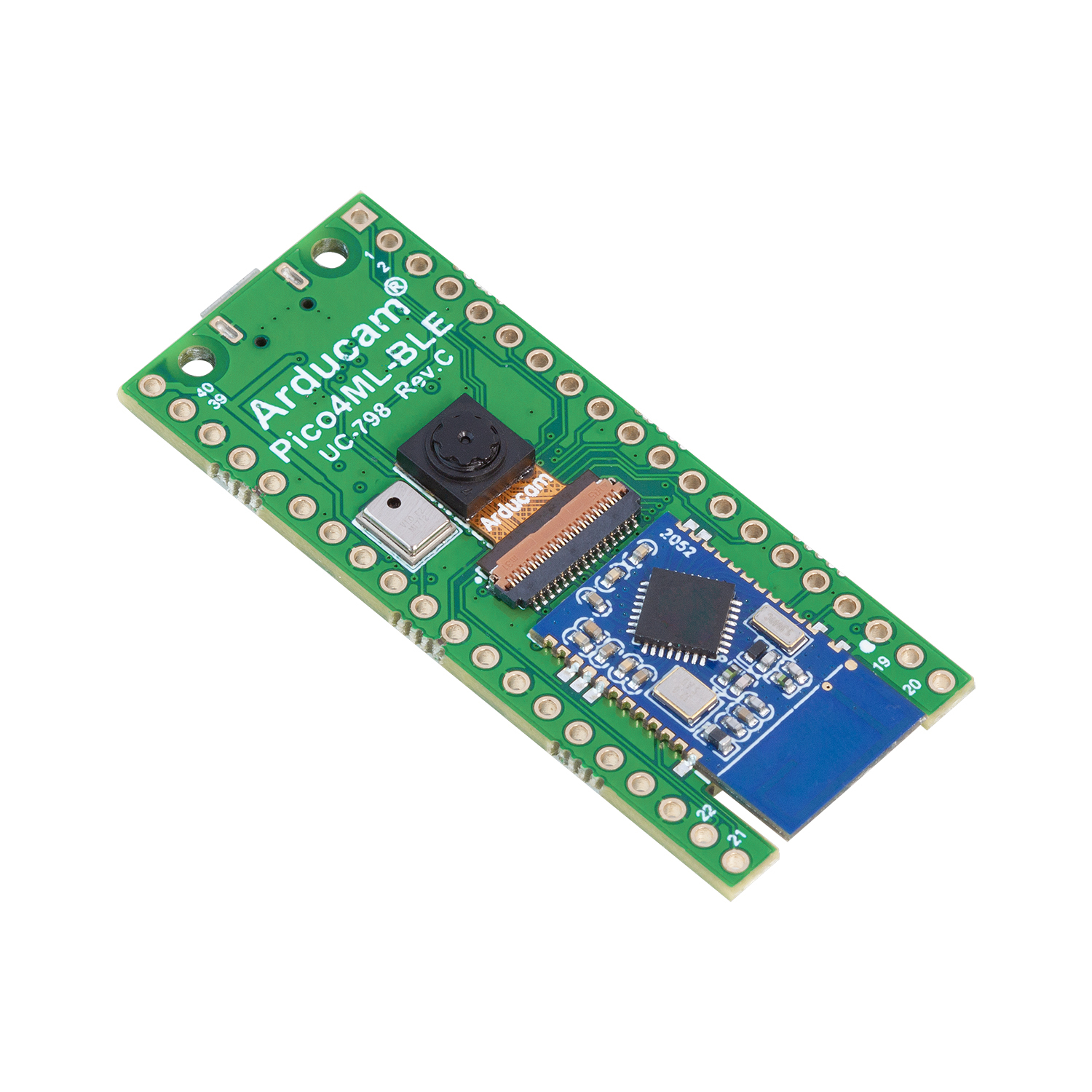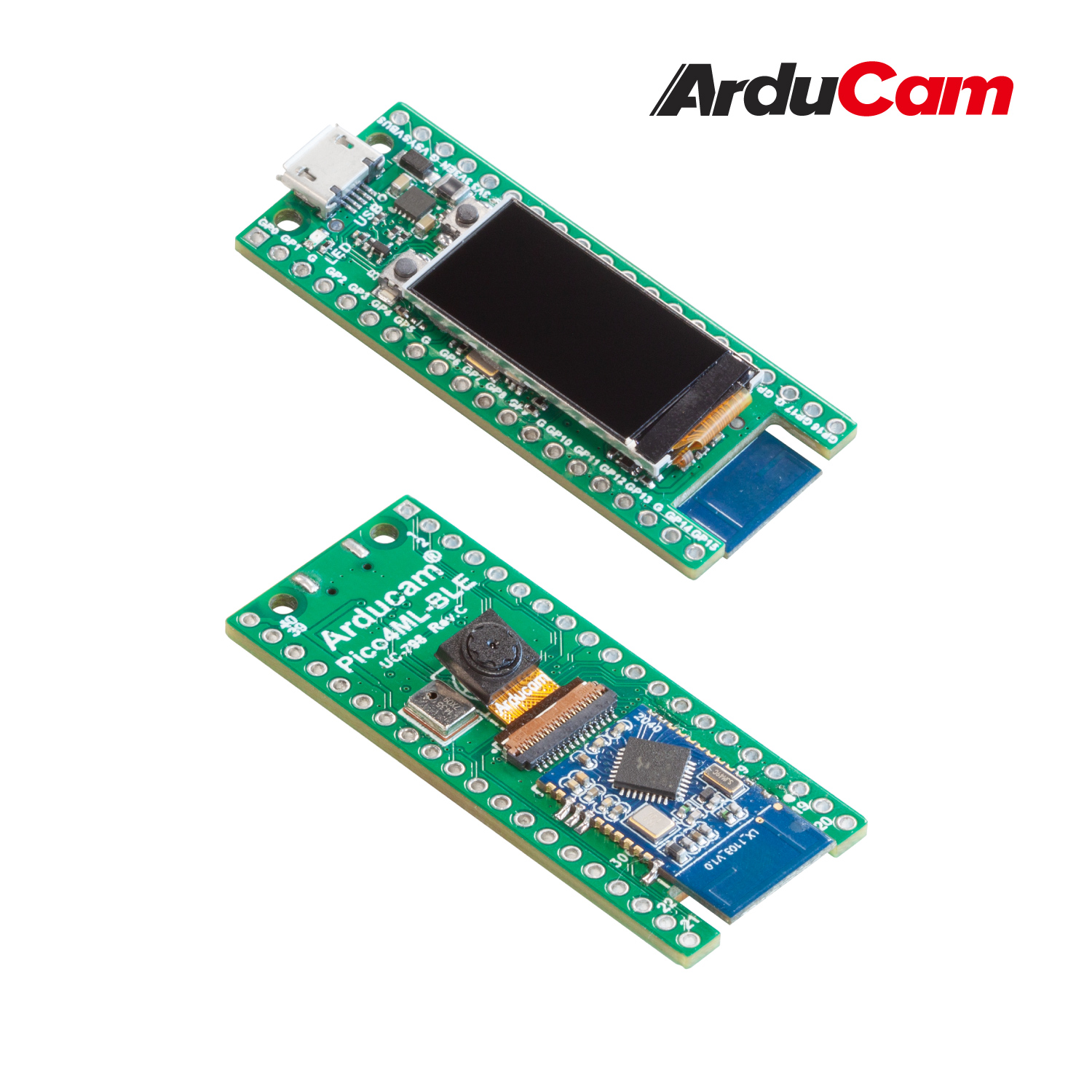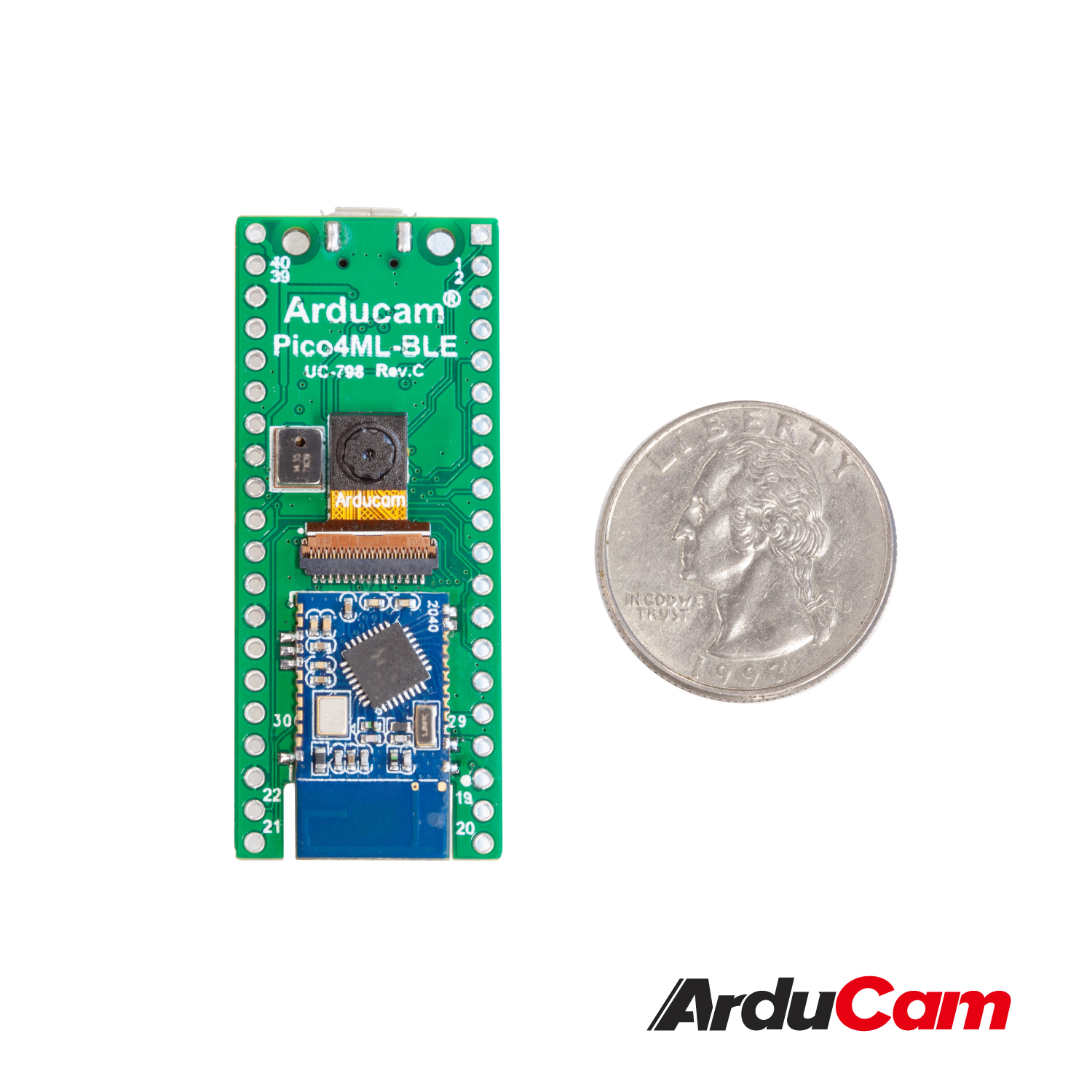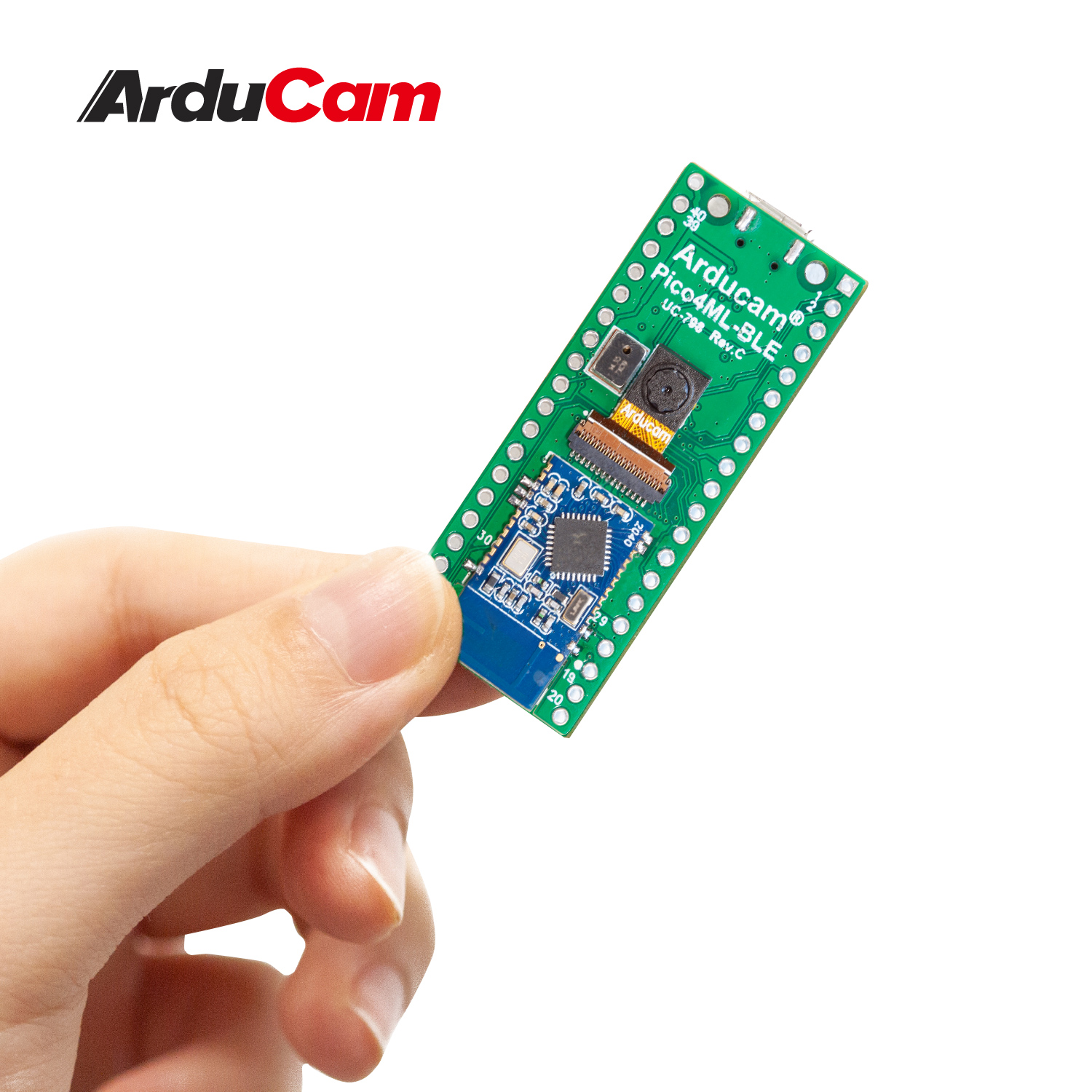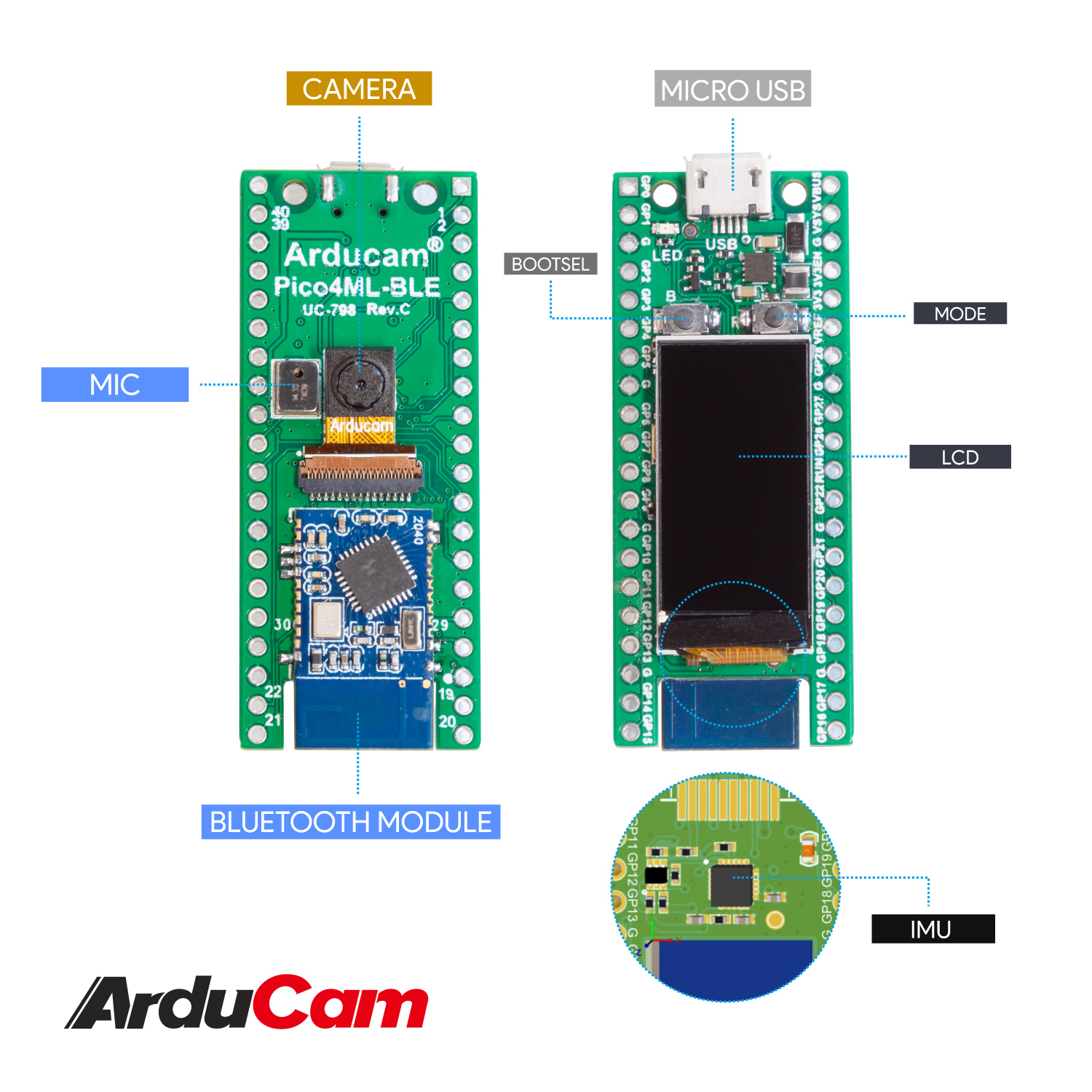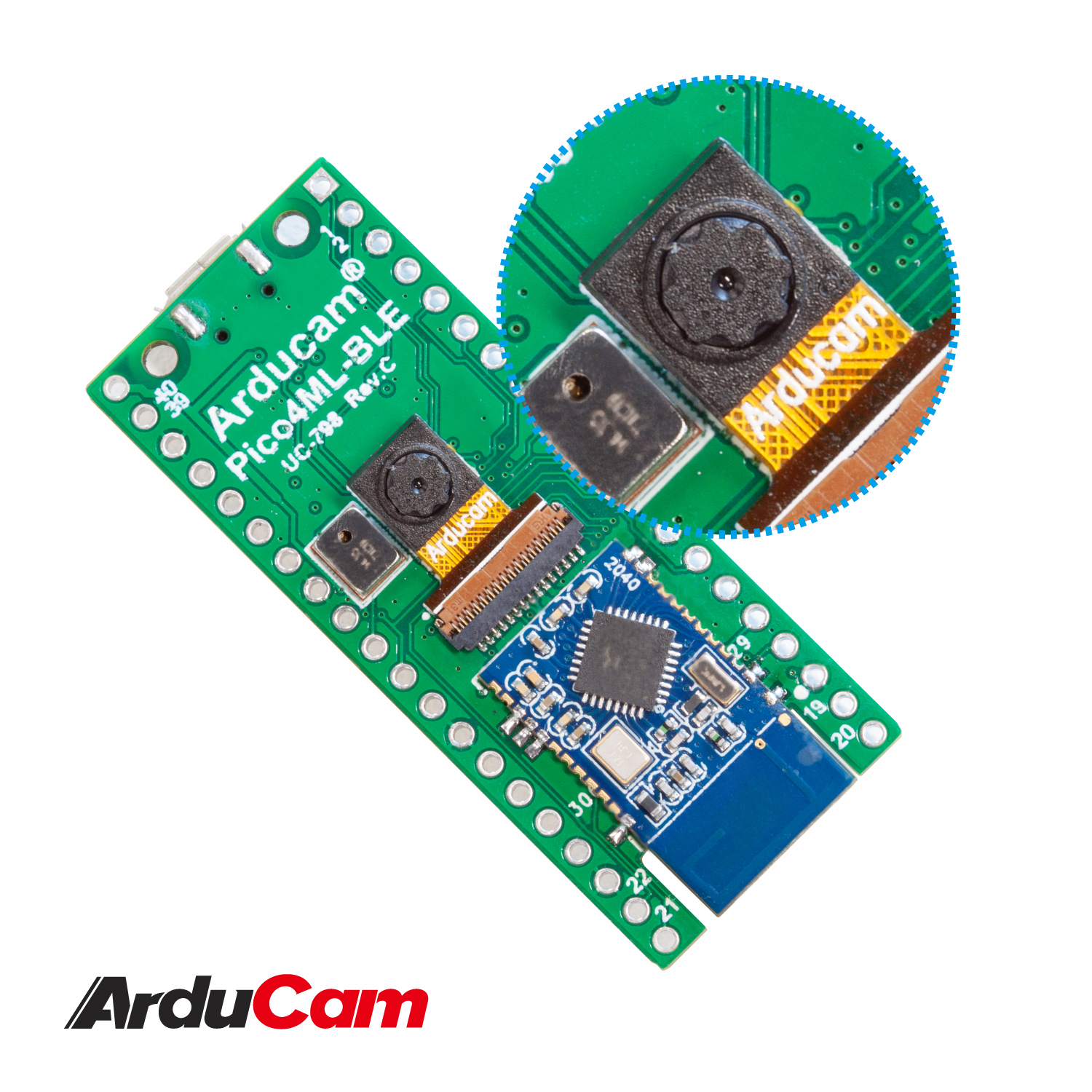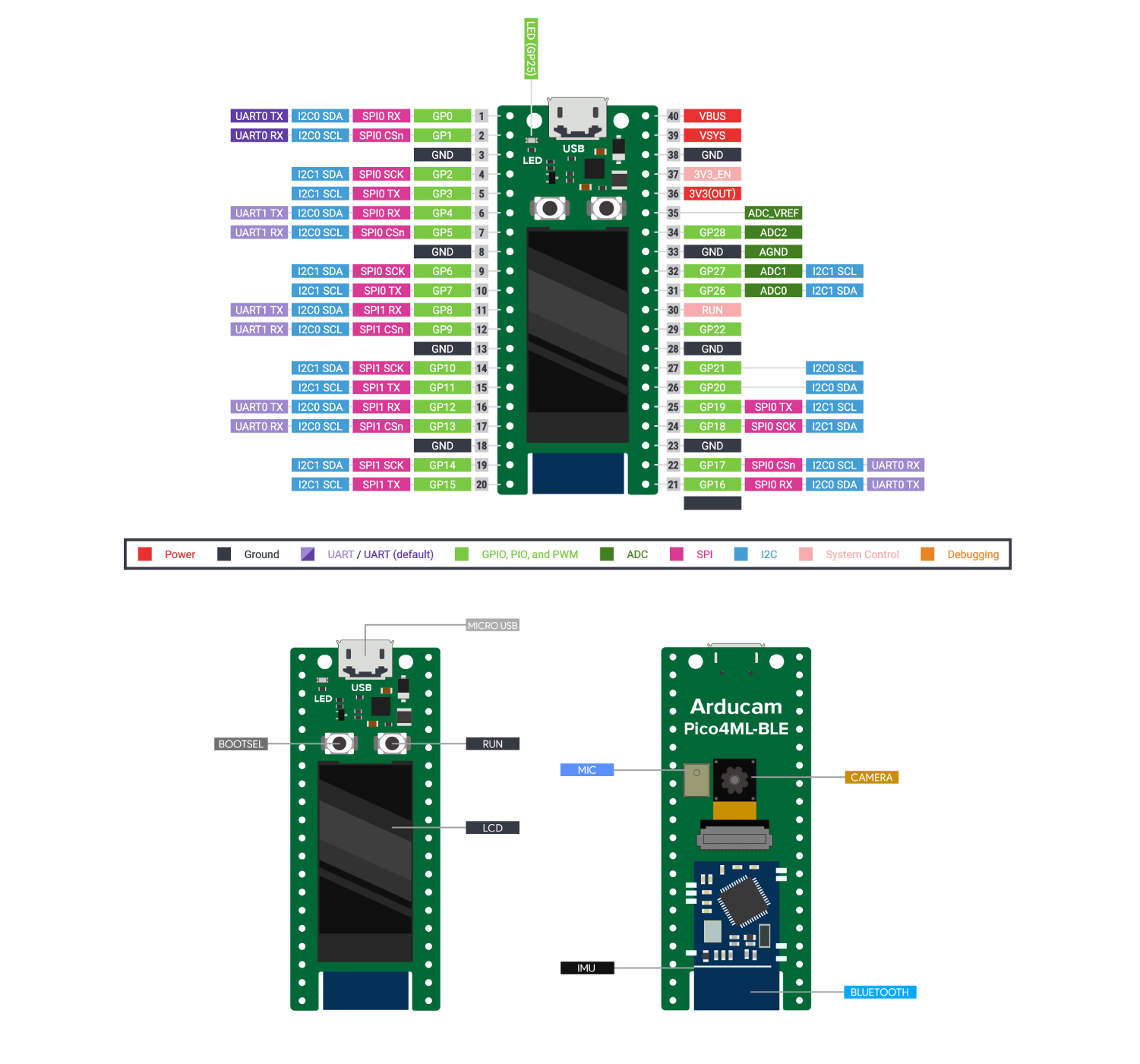[Discontinued] Arducam Pico4ML TinyML Dev Kit: RP2040 Board w/ QVGA Camera, Bluetooth module, LCD Screen, Onboard Audio, & More
Discontinued, Check the kit without the Bluetooth module, please view B0302.
To make Raspberry Pi Pico more robust for TFLite Micro, the Arducam team took the Raspberry Silicon (also known as the RP2040 chip) and created Pico4ML, a microcontroller dev board made exclusively for running and training machine learning examples.
Arducam Pico4ML Specifications
- Microcontroller: Raspberry Pi RP2040
- IMU: ICM-20948 (low power)
- Mono channel microphone w/ direct PCM output
- Camera Module: HiMax HM01B0, Up to QVGA (320 x 240 @60fps)
- Screen: 0.96 inch LCD SPI Display (160 x 80, ST7735)
- Operating Voltage: 3.3V
- Input Voltage: VBUS: 5V +/- 10%. VSYS Max :5.5V
- Length: 51 mm
- Width: 21 mm
- Bluetooth module
IMU Specifications
- 3-axis gyroscope, 3-axis accelerometer, 3-axis compass, and a Digital Motion Processor™ (DMPTM) in a 3 mm x 3 mm x 1 mm (24-pin QFN) package
- DMP offloads computation of motion processing algorithms from the host processor, improving system power performance
- EIS FSYNC support
- Lowest Power 9-Axis Device at 2.5 mW
- 3-Axis Gyroscope with Programmable FSR of ±250 dps, ±500 dps, ±1000 dps, and ±2000 dps
- 3-Axis Accelerometer with Programmable FSR of ±2g, ±4g, ±8g, and ±16g
- 3-Axis Compass with a wide range to ±4900 μT
- Onboard Digital Motion Processor (DMP)
- Android support
- Auxiliary I2C interface for external sensors
- On-Chip 16-bit ADCs and Programmable Filters
- 7 MHz SPI or 400 kHz Fast Mode I²C
- Digital-output temperature sensor
- VDD operating range of 1.71V to 3.6V
- MEMS structure hermetically sealed and bonded at wafer level
- RoHS and Green compliant
Bluetooth Specifications
- Bluetooth 5.0
- 40KB RAM+8KB Cache + 4Mb Flash
- Tx Power:﹢ 5dBm
- Input Voltage: 1.8~3.6V
- 2 x TWI/I2C, 3 x UART, 3 x SPI, 5 x PWM
- Supported Platform: Zephyr RTOS
- Firmware upgrade throughUART0, SWD, OTA
- Mono Sigma Delta Voice ADC, 16bit;16KHz sample rate;SNR(A weighted): 83dB
- Configurable high pass filter with ADC
- Support mono DMIC IN, DMIC Clock up to 3MHz
- I2S Tx: standard I2S, Support both the master mode and slave mode, sample rate up to 44.1KHz/48KHz
- I2S Rx: standard I2S and TDM4 mode, Support both the master mode
- and slave mode, sample rate up to 44.1KHz/48KHz.
- Dimensions: 18 x 15 mm with antenna, 15 x 13 mm without antenna.
Microphone
- Direct PCM output
- 20 bit, 16 kHz Sample Rate
- Mono Channel
- 64dB signal-to-noise ratio
Arducam Pico4ML Pinout
RP2040 Specifications
- Dual-core Arm Cortex-M0+ processor, flexible clock running up to 133 MHz.
- 264KB on-chip SRAM.
- 2MB on-board QSPI Flash.
- 26 multifunction GPIO pins, including 3 analogue inputs.
- 2 × UART, 2 × SPI controllers, 2 × I2C controllers, 16 × PWM channels.
- 1 × USB 1.1 controller and PHY, with host and device support.
- 8 × Programmable I/O (PIO) state machines for custom peripheral support.
- Supported input power 1.8–5.5V DC.
- Operating temperature -20°C to +85°C.
- Castellated module allows soldering direct to carrier boards.
- Drag-and-drop programming using mass storage over USB.
- Low-power sleep and dormant modes.
- Accurate on-chip clock.
- Temperature sensor.
- Accelerated integer and floating-point libraries on-chip.
Data Sheets, Docs & Files
How to build a Magic Wand with Edge Impulse for Arducam Pico4ML-BLE
1.Why Arducam Pico4ML-BLE? Do you want to build your own magic wand? You only need to have an Arducam Pico4ML-BLE. Pico4ML-BLE is based on Pico4ML to increase the BLE module to realize the function of Bluetooth communication. This is somewhat similar to Arduino Nano 33 BLE. This upgrade makes Arducam’s Pico4ML the most versatile Machine […]
- Pico4ML-BLE user manual final
- Pico4ML-BLE Enclosure STEP File
- Getting Started with MicroPython on Rpi Pico
- C/C++ Development w/ Pico and RP2040-based Boards
- Raspberry Pi Pico Datasheet
- RP2040 Datasheet
- RPi Pico C/C++ SDK
- RPi Pico Python SDK
- API references
- Connection Diagram
Package Includes
- 1 x Arducam Pico4ML Dev Board
- 1 x Micro USB Cable


